Interview with Gary Ellerman
October 13, 2015
Deadman Road; Stories and the Civilian Conservation Corps (CCC)
Interview and transcription by Linda Bell
[Interview available as PDF file]
I think there is evidence that the first Deadman Road was built by the CCC. There are spots where it looks like it was put in by the CCC boys. At the time, in the 1930s, there were lumber camps up in here.
Likely (the CCC) built the first fire tower on Deadman. That fire tower – they tore that down in about 1960, didn’t they, and put up the steel one? I remember it being manned all the time.
My dad was doing hauling up here in the `60s. Then I was with the company that rebuilt (the road) from the Deadman tower all the way down to the other side to the Laramie River Valley. The middle `80s is when I rebuilt the road. I was working for a private contractor hired by the Forest Service. (The road) used to be a lot narrower, and rougher.
Here’s a nice culvert. The county comes in here, when I was working up here, with a back hoe instead of shoveling those catch-basins out with a shovel.
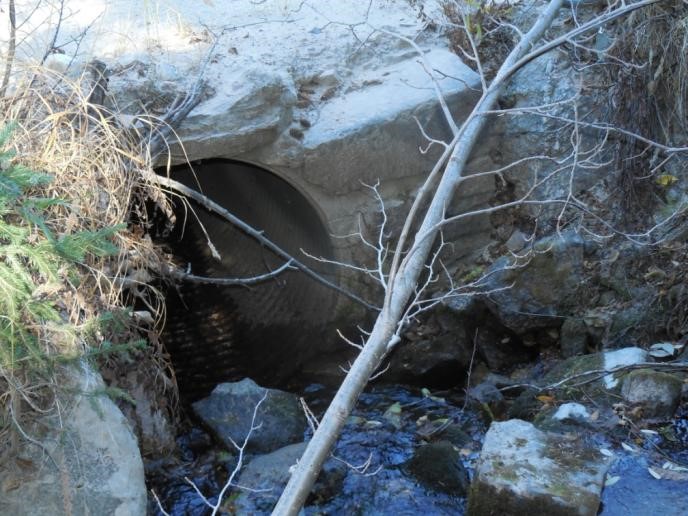
They would just take the backhoe down in there and then they’d tear up all the rocks. And that shouldn’t happen. I’d say this culvert was put in at about the same time as the tower – early to mid-`30s. They haven’t been taken care of. Assuming they were made in the `30s, that would make the stone work on these culverts and bridges 80 to 85 years old.
I was telling you about my dad, Les Ellerman, earlier. He hitch-hiked out here in the 1940s when he was 17 or 18 – 18, I guess. There was a lumber camp at Sand Creek and he worked there.
There are several catch basins up in here. A catch basin gathers the water so it can run into the culvert. The newer ones are made out of concrete or they’re made out of steel, galvanized steel, but look how long these stone ones have lasted. I have no idea where they cut that stone. Some of it doesn’t look native but maybe it is. It took a pretty good mason to square all that stuff up. It’s lasted pretty good.
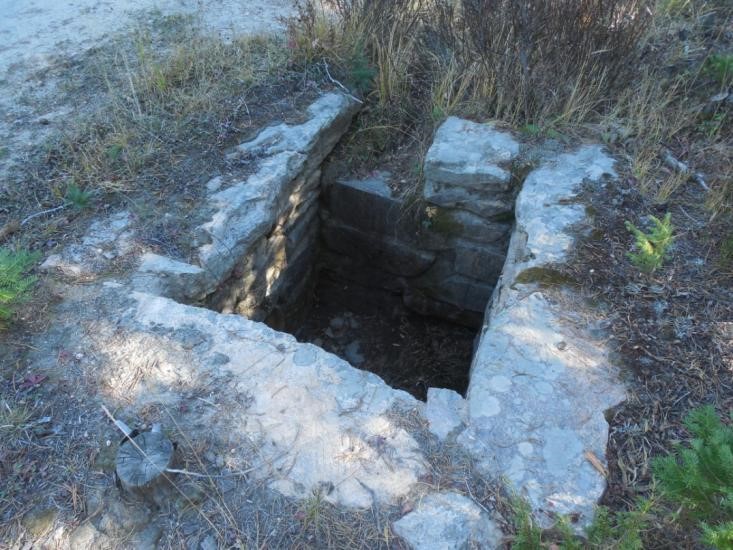
I hate to see something like this destroyed.
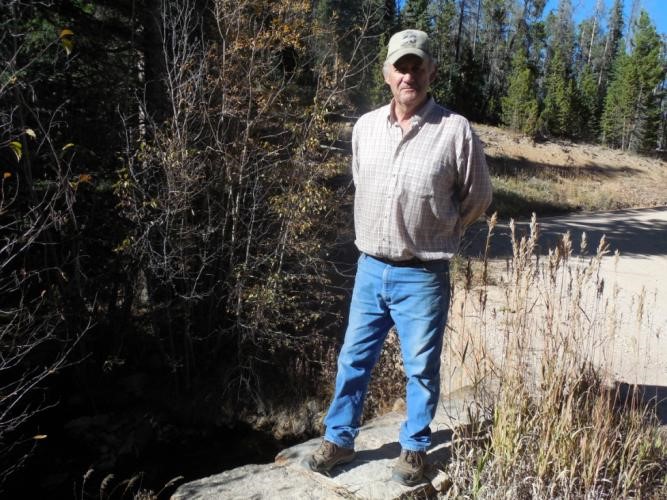
The one (bridge) over there by Stubb Creek, I rebuilt that about three years ago now. The top had been torn off by snowplows and such. But the base is still there. When I was a little kid over there with my dad, the ranger station (at Stubb) was still workable. They had a work-force. Horses and everything. That’s when I was there in the early `50s.
This is the only local existing road that I know of that still has this type of (examples of CCC) work. If a person could get it, I hate to say it, protected, then they would take better care of it.
We got our equipment stuck up here in the snow one time. We had one snow machine but we had to haul some batteries in – batteries so we could start the equipment. We walked from that first gate down there on Deadman all the way to the tower. The snow machine pulled the batteries, but my brother and I walked. We finally got the equipment started and got them out. We got down to the Cherokee Park Road. We were going down trying to get to (Red) Ashby’s place. We got in the truck and got down there, but we couldn’t get through, so we had to go back up and get the dozer, and we plowed all the way to Ashby’s. We finally got to Ashby’s about 12:30 am that night. This was early winter. That was a heck of a walk. We got to Ashby’s by the Pearl Beaver Road.
I remember the (Killpecker) fire. They don’t seem to be doing much in the way of road work up here. For the radio tower…. I get a kick out of the Forest Service. You know they changed the name. It was a “controlled burn” that got out of control here. So now they started calling it a “prescribed burn.” The Killpecker burn was a “controlled” burn. It’s come back now.
There’s another source you might go to – I don’t know. Gene Barker is a long time resident. He might remember when the CCC was working here. The people I know that would know this stuff are already gone.
Here’s another culvert. These culverts are scattered all along (the Deadman Road). On both sides. There are a lot of them. I don’t know how many there are, but … I’d guess there are over a hundred. They are scattered all the way up through here. There’s an old headwall. They made a headwall here, but they tore it up while they were grading. Deadman is a Forest Service Road, but the county maintains it.
This bridge is in great shape. Usually the rock work is just on the uphill side. I’d like to see all the bridges and culverts stay in as a great a shape as that last one.
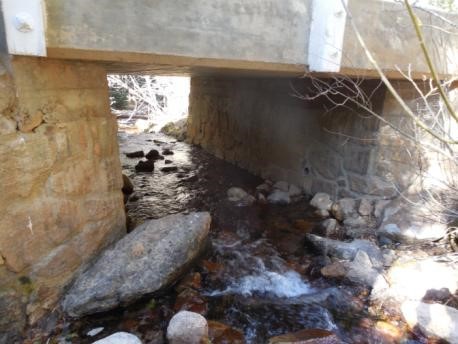
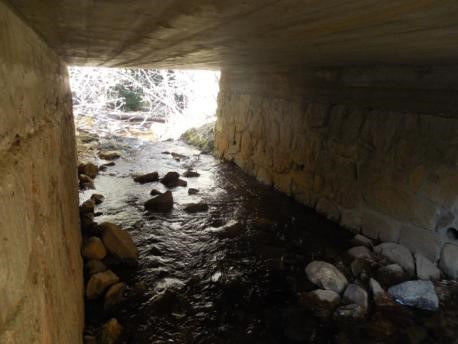
See here the damage here where they took a backhoe in? You can see how badly they damaged it. Here’s another one that almost filled in with silt. See how they break them up when they get the backhoe in there? You know you see this kind of stuff in the southern part of the country – this old stonework that has lasted for years and years.
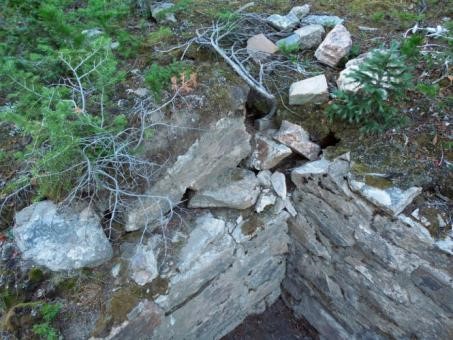
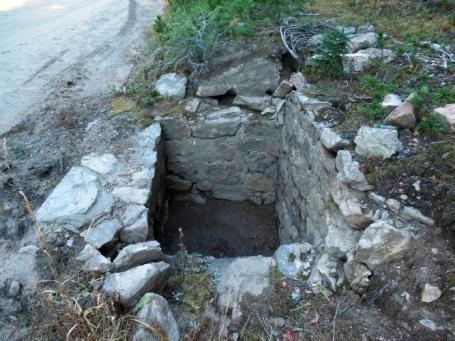
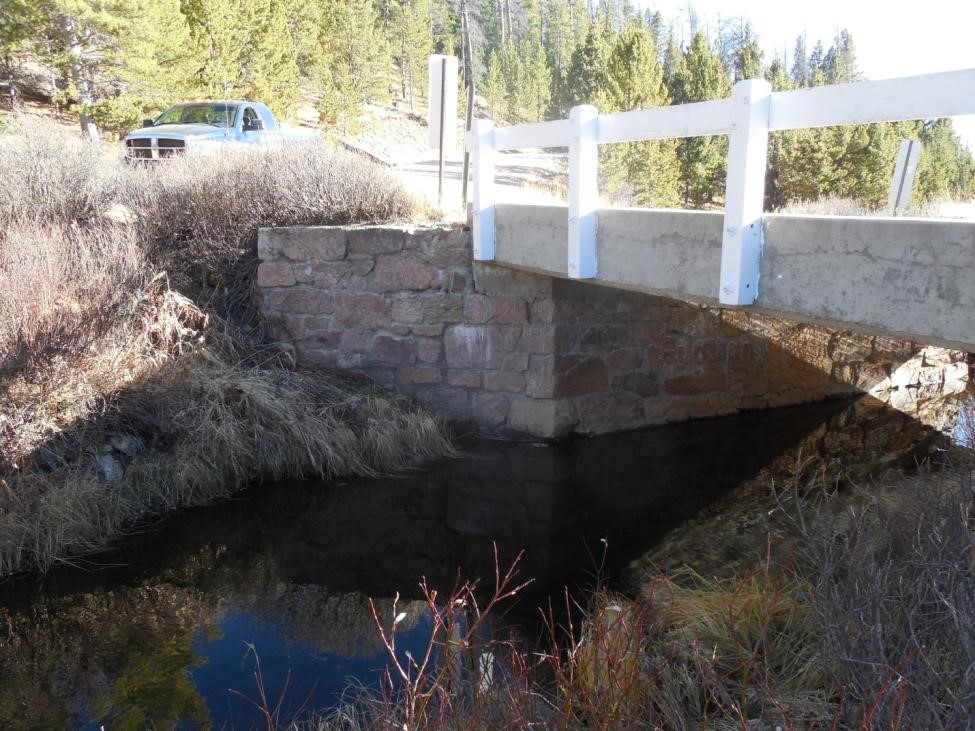
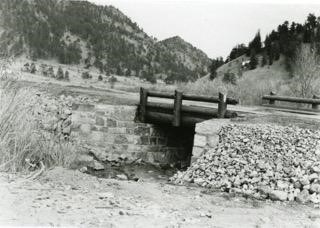
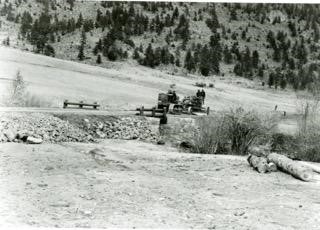
Addendum
When I helped rebuild the Deadman Road we did a lot of thinning along the sides of the road. On the West side because of the thinning, it opened up the views of the Laramie valley and it was really a pretty picture. Now, if you could get a clear view of the west and the valley below, where else would you see so many buffalo, a reminder of the old west?
I can’t help think that if the Deadman Road was put on the Colorado Scenic and Historic Byways it would be somewhat protected from destruction and maybe improved. The C.C.C. stonework, fire tower, scenic drive and view of the Rawahs from the west side are all awesome. Red Feather may benefit economically and be given a boost. I would not be in favor of all the traffic, but it is going to happen someday. I have seen so many changes in the past 60 years but some change is not always bad. If we can’t help preserve the past for future generations, who will? People have a right to know about the what, where and why of the past history of our GREAT NATION. God Blessed us with it, so help protect it.
Gary Ellerman
December, 2015